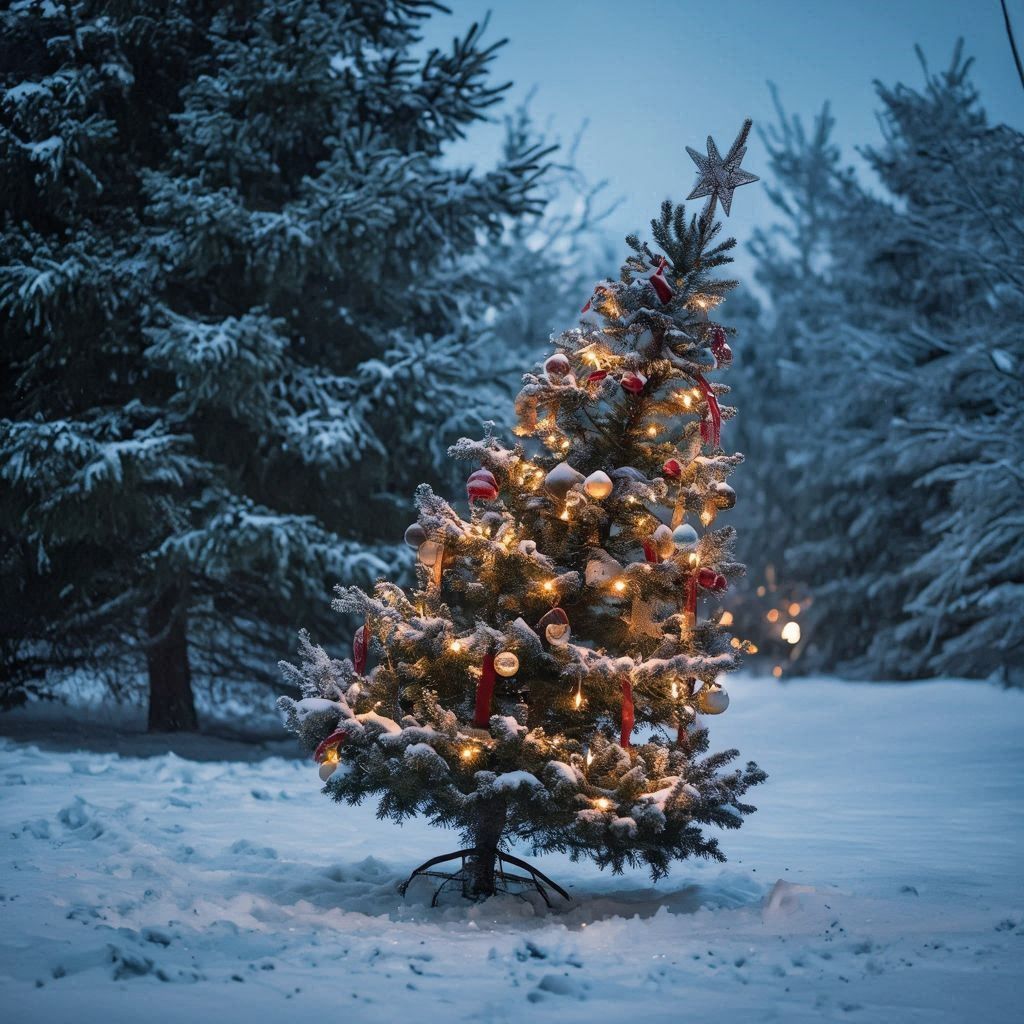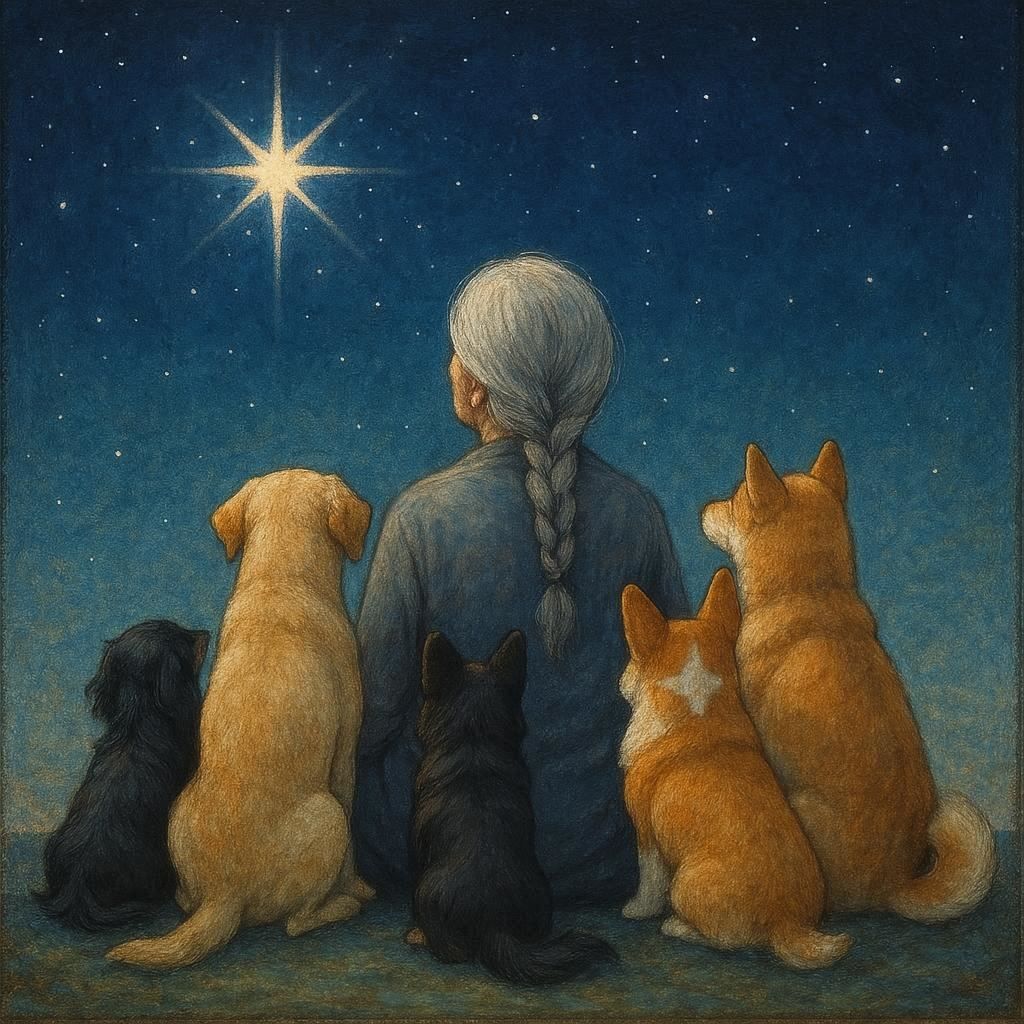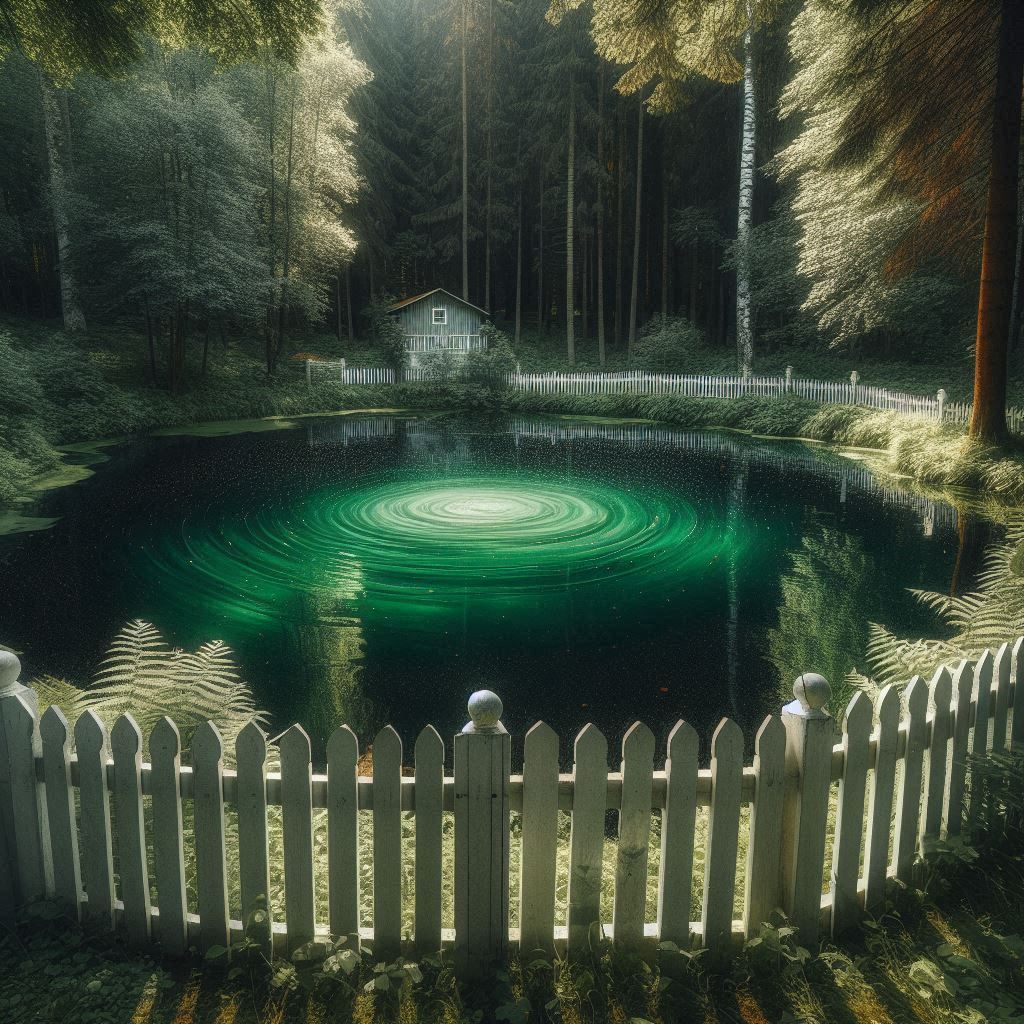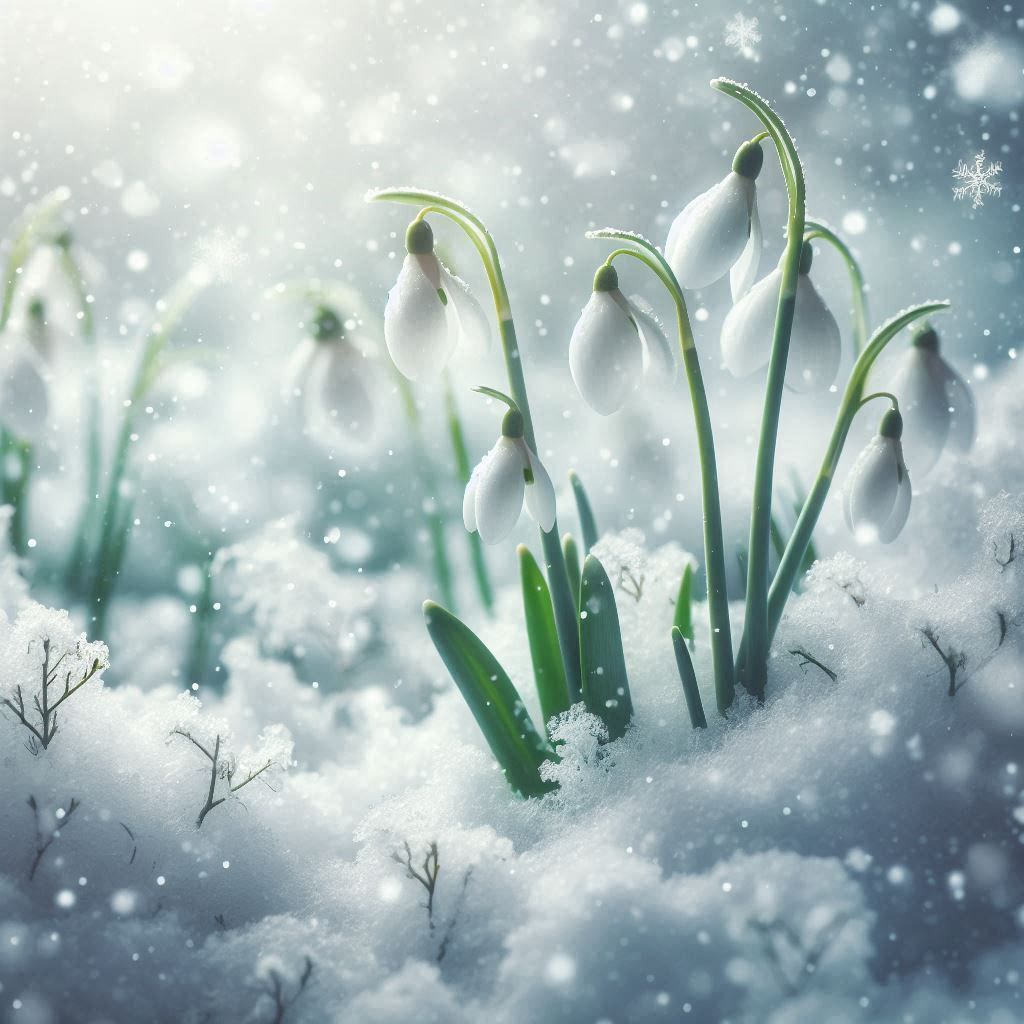Danse Macabre
It’s fall. Ghosts are rising up. Their hauntings inspirit and enliven me.
Each morning begins with a danse macabre (dance of death). As I watch transfixed, translucent, white, ethereal figures emerge from my pond and cavort upon the still water in a lively choreography that is part foxtrot, part moonwalk, part ballet, and part hip-hop. Performance completed, they vanish into thin air.
Of course, the ethereal figures are not really supernatural, otherworldly beings. In fact, they are as natural and of this world as anything can be. Composed of mist, they are due to the meteorological phenomenon of evaporation fog, which happens when cold air moves over warm water. The warm, moist air just above the pond’s surface mixes with the colder air above it. The mixing cools the moist air until it reaches its dew point (100% relative humidity), causing the water vapor to condense into visible droplets of mist. As the sun warms the air and water, the air’s capacity to hold moisture increases, causing the mist to rise in wispy columns. Turbulence created by the mixing of the air layers, as well as even the slightest breeze makes the columns change and move in distinct patterns. Gradually, the shifting shapes dissipate and evaporate into the gaseous state from whence they came, becoming as invisible as spirits gone home to rest in peace. But not before the phantoms of fog and mist do a vibrant danse macabre.
The idea of the danse macabre began in the Middle Ages, appearing first in some literary and dramatic works. Then, in 1424 and 1425, the first fully developed visual representation of the danse macabre was painted as a large mural by the same name on the exterior of the charnel house at Paris’ Cemetery of the Holy Innocents. It portrayed grinning, dancing skeletons escorting living humans from various social classes and walks of life to their graves, often appearing to mock and make light of those who had held prestigious positions. In 1669, the charnel house was demolished so that a road could be widened. However, the mural’s image was preserved though multiple wood engravings used in printing. Some of those print blocks still exist today.
For the remainder of the 1400s and the centuries that followed, the danse macabre was an oft recurring and reinterpreted art theme. It continues to be so even today and is now considered a classic motif. As recently as June 2025, artist Nicola Turner exhibited her own depiction of the danse macabre with a large-scale installation at Art Basel in Basel, Switzerland. Though to be clear, Ms. Turner contends she primarily took her inspiration, not from the Paris mural, but from a similar mural painted a decade or so later at Basel’s Dominican Convent.
Amusingly, in 1805, the Basel mural was unlawfully torn down by offended locals who declared it a disgrace. Which makes me wonder if the truth suppressors and fraidy-cats just couldn’t take the teasing about the inevitability of their fates. In any case, art lovers managed to salvage twenty-three fragments of the mural, nineteen of which still survive. In addition, Basel’s Danse Macabre was also preserved through woodcuts, copperplates, and watercolor copies. Further proof that death is not one to be killed in this world. The lone exception to an all-embracing rule.
Perhaps the most famous expression of the danse macabre is the symphonic poem of the same name, written in 1874 by French music composer, Camille Saint-Saens. In 1872, it began as a song for voice and piano, adapted from a poem by Henri Cazalis, “Egalite-Fraternite” (“Equality Fraternity”). Two years later, Saint-Saens expanded his song to be an orchestral composition.
Both Cazalis and Saint-Saens based their works, not on any painting, but on an old French folktale. The story claims that every year at midnight on La Toussaint (All Saints’ Day), Death plays his fiddle for the dead, causing skeletons to crawl out of their graves and dance until a rooster crows at dawn and the party ends with the deceased retiring to their final resting places for another year. Yet, like all artistic expressions of the danse macabre that came before, Cazalis’ “Egalite-Fraternite” and Saint-Saens’ Danse Macabre are social commentaries, emphasizing the futility of worldly pursuits in the face of death. For death levels the social hierarchy and makes all people equal and united as one. The way I see it, it is as if death shows us what we should be in life. In “Egalite-Fraternite,” this recognition of human solidarity is represented with “The King dancing among the peasants.” As well as with the last line of the poem that reads “Long live death and equality.”
The danse macabre is fundamentally rooted in the concept of memento mori, a Latin phrase meaning “Remember that you must die.” As evidenced by the many creative works it has inspired, at its core, memento mori is a philosophical view of death as the ultimate egalitarian. Death does not bend the knee to anyone, regardless of their mortal rank and temporal status. Nor does death worship the unholy trinity of wealth, power, and fame.
Additionally, as a reminder of our shared kinship and collective spirit, memento mori is a warning against oppression. For the oppressor will one day be on the same standing as those they wronged. A line from Shakespeare’s Hamlet comes to mind. “A man may fish with the worm that hath eat a king and eat of the fish that hath fed of that worm.” (Although perhaps not before the worm plays pinochle on the king’s snooty snout.)
It is anyone’s guess how old the concept of memento mori is. The phrase memento mori goes back to the ancient Roman Empire. There a slave would periodically whisper the mortality reminder in the ear of a victorious general as the two of them rode together in a triumphal procession. The idea was to keep the vanquishing hero humble and grounded in his humanity, thereby protecting him from straying off the right-minded path and falling into narcissism. In essence, the slave was saying, “This is nothing but a fleeting moment of earthly glory. You are not divine, and your success is not everlasting. It is only moral goodness that is invincible. Thus, forsake vanity and live the virtuous life.”
Going back in time even further, though the words memento mori did not yet exist, the notion certainly was alive and well when the Book of Genesis was written. In both the Hebrew Bible and Christianity’s Old Testament, a mortality reminder, spoken by God to the first human no less, can be found at Genesis 3:19. “You are dust, and to dust you shall return.” Approximately a thousand years later, the Islamic Quran was written. Within its pages at Surah Taha 20:55 are similar words from God with the same meaning, directed once again to Adam.
If all that were not enough to grab my attention and make me take heed, the gist of memento mori is much the same as the individual guidance given me by three of the most influential people in my life. The first was what my mentor uncle imparted the last time I saw him. He was dying, and we both knew it. As we said our good-byes, his final words to me were “Make the most of it.” Similarly, one of the last counsels my mother provided before dementia began to steal her away was, “It all goes by really fast.” Then there was this pointer from my father, delivered after I had confided a dream I very much wanted to make come true “someday.” “Don’t wait,” advised my dad. “Don’t wait for ‘someday.’ Do it now.”
So I regard
memento mori
as a superior piece of universal wisdom, well worth living by. Because in no time at all, every soul on Earth will be doing the
danse macabre.
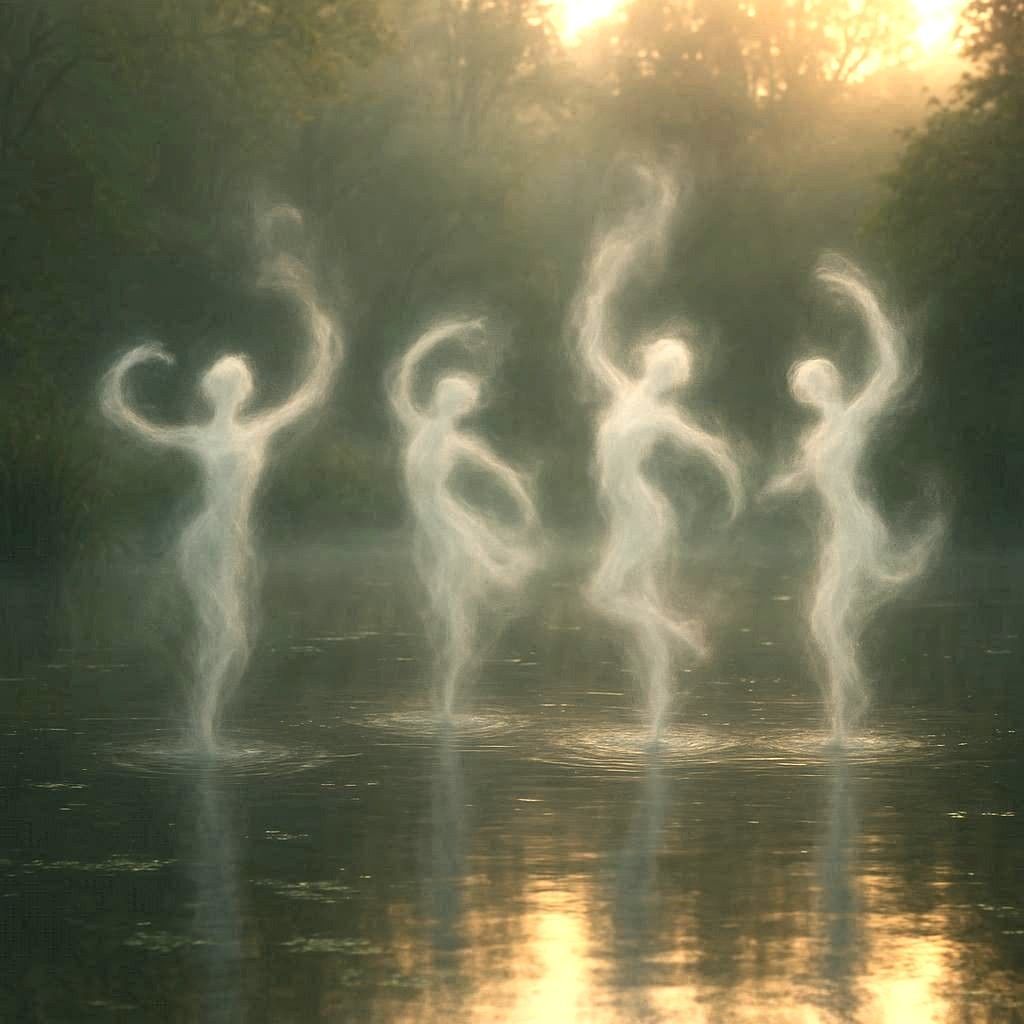
Credit: Bing Image Generator
Share this post via


